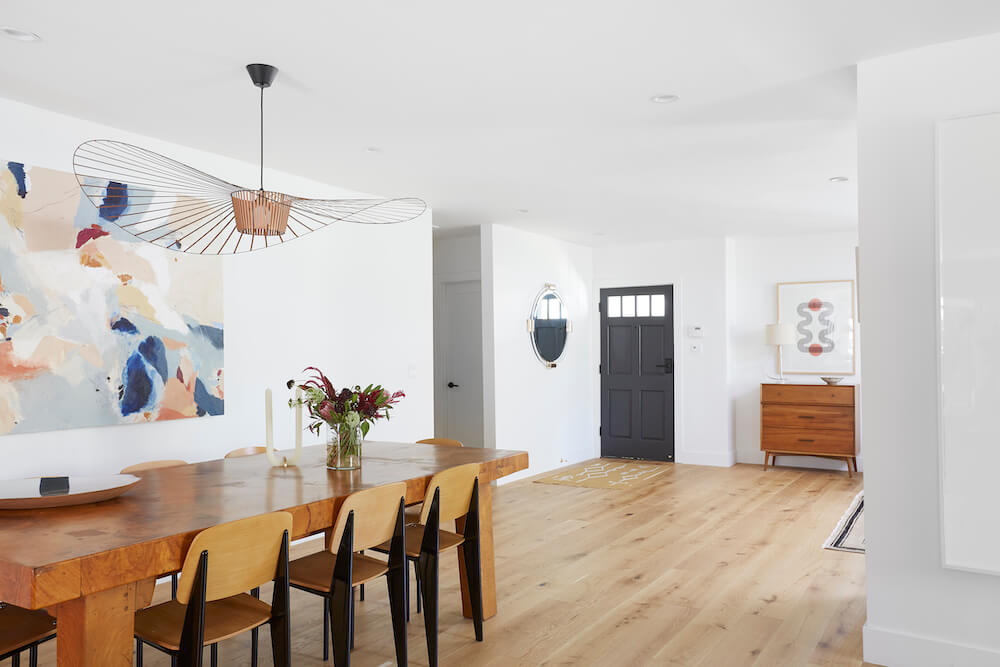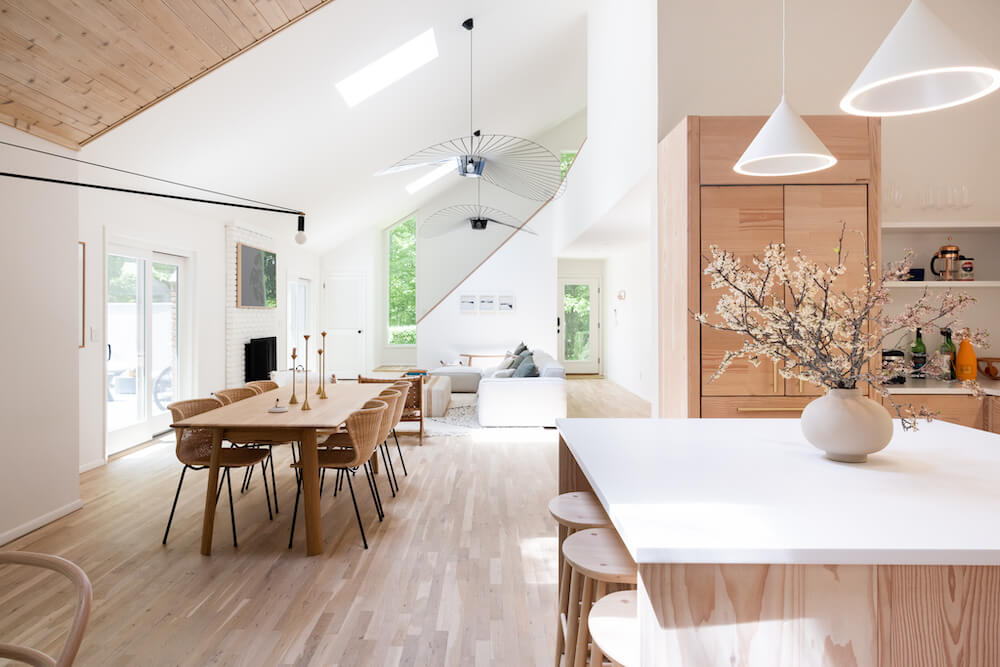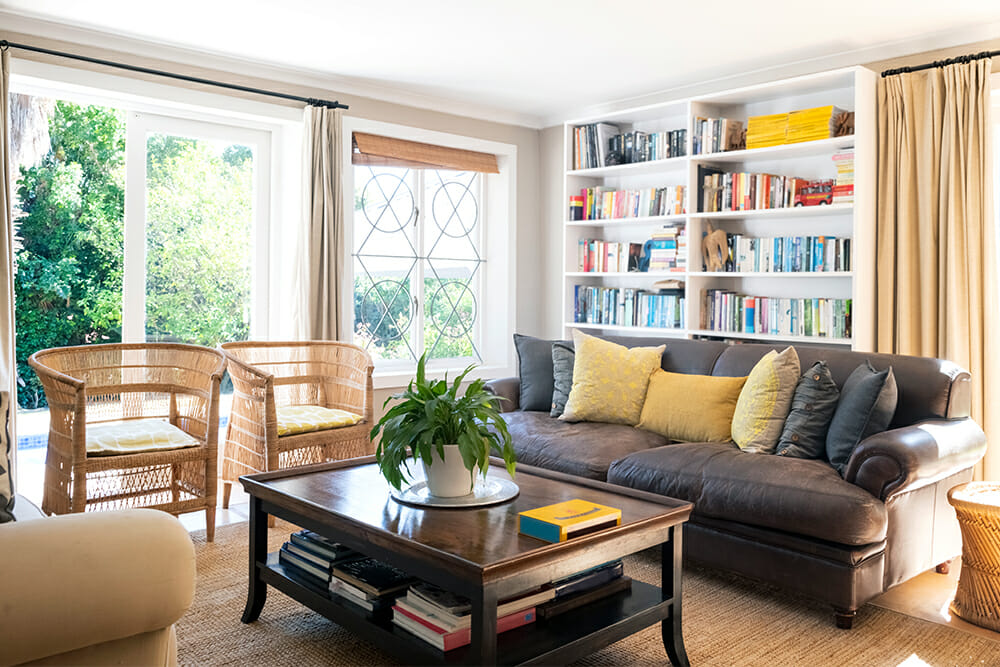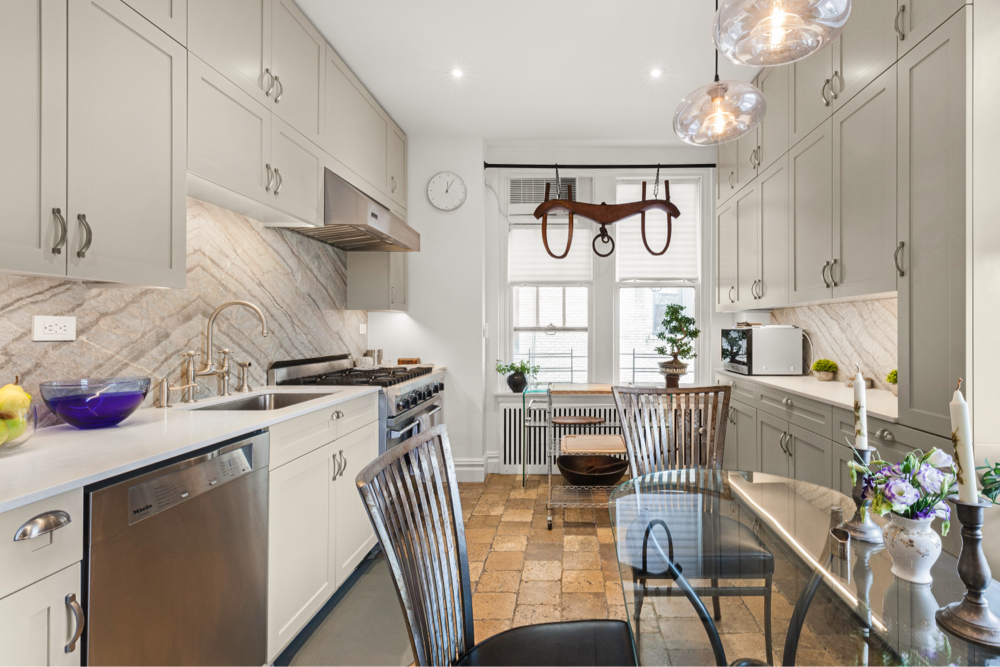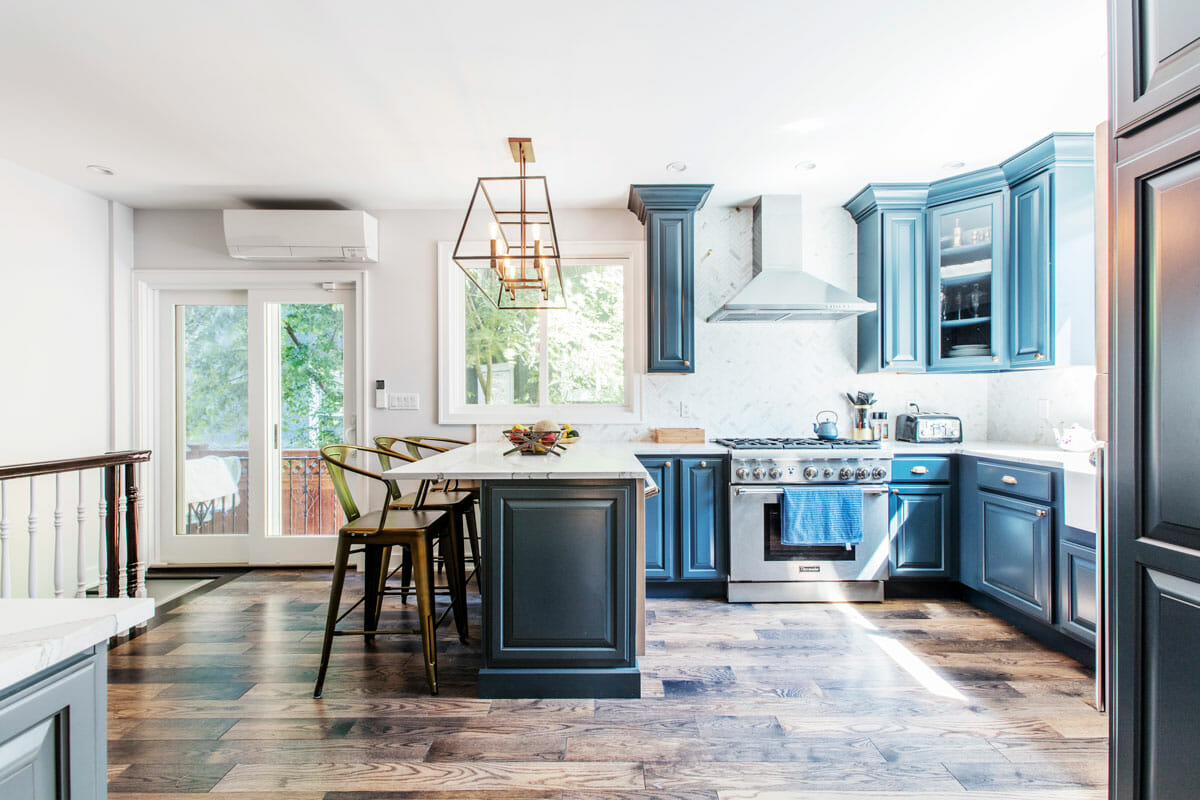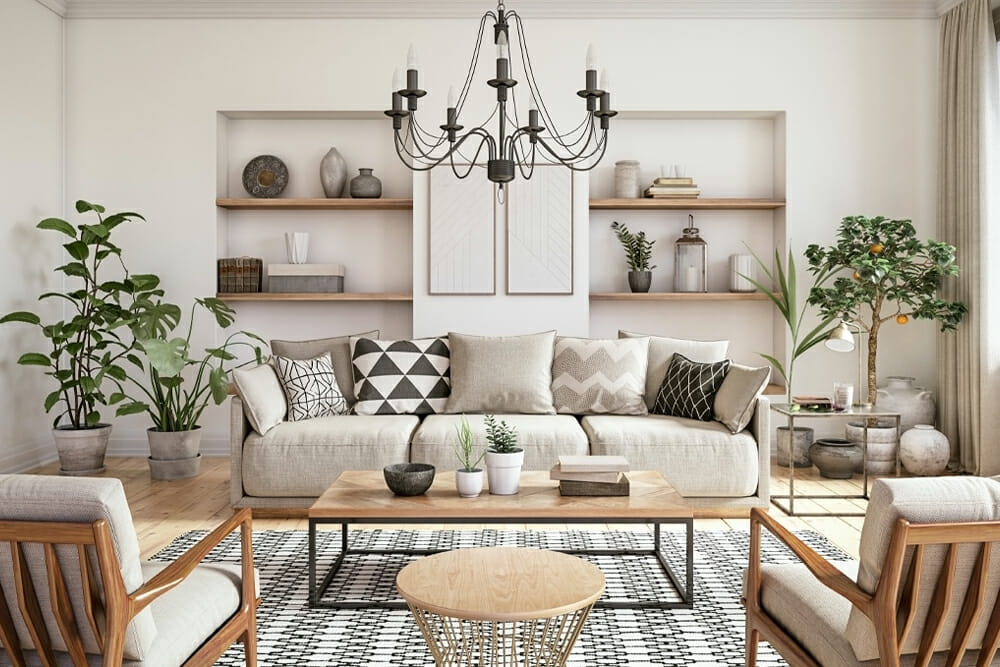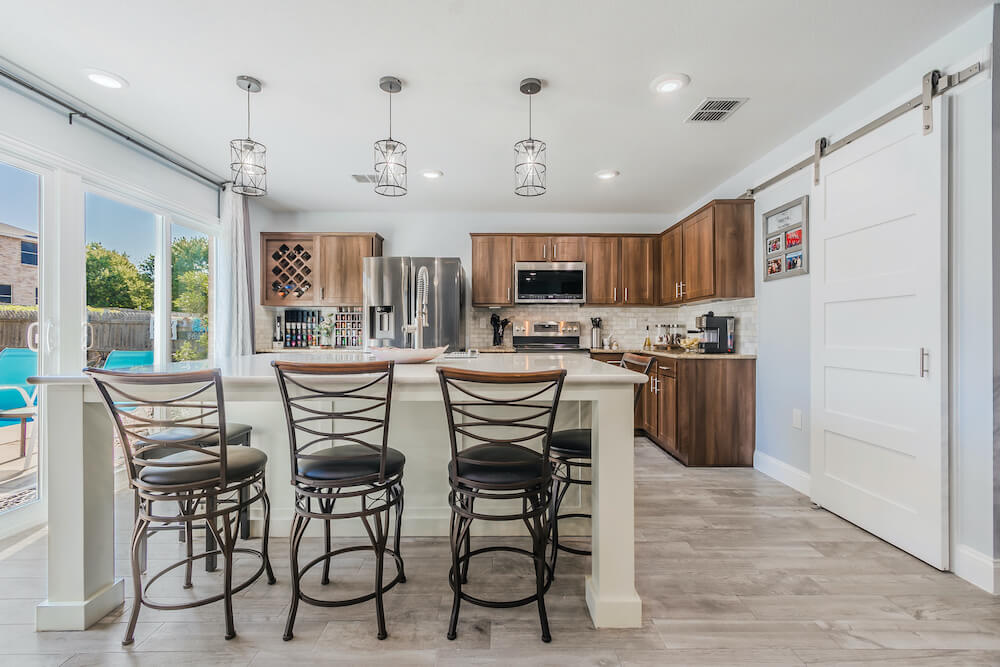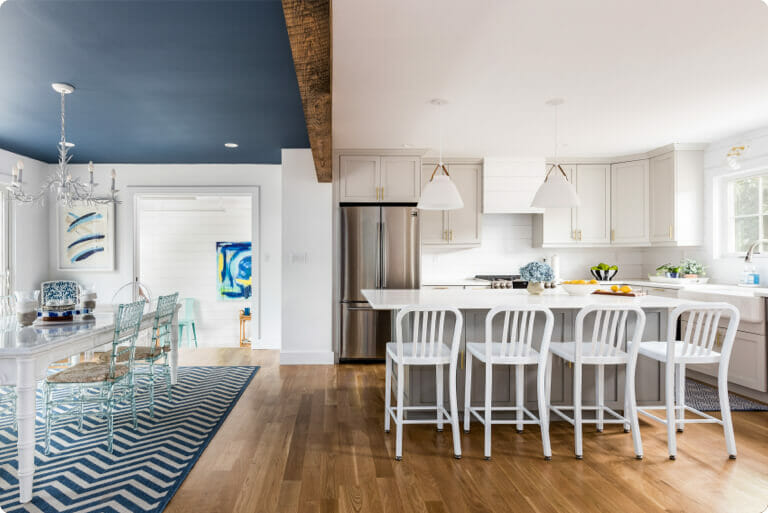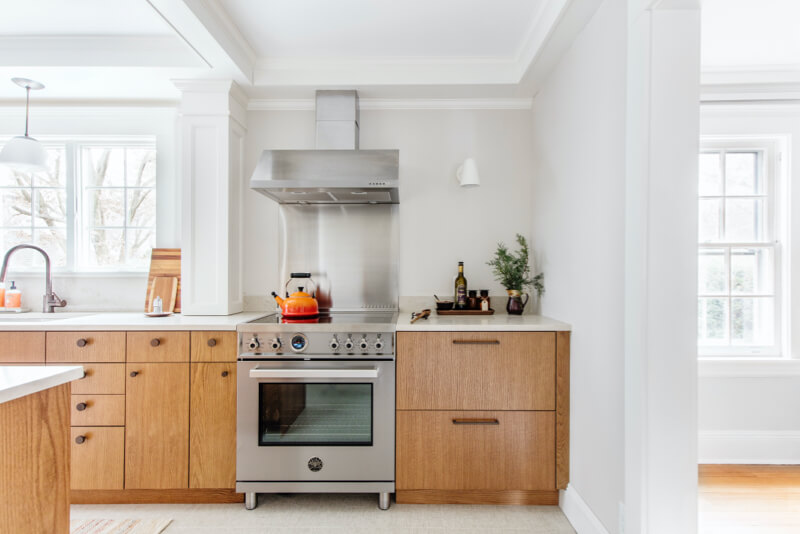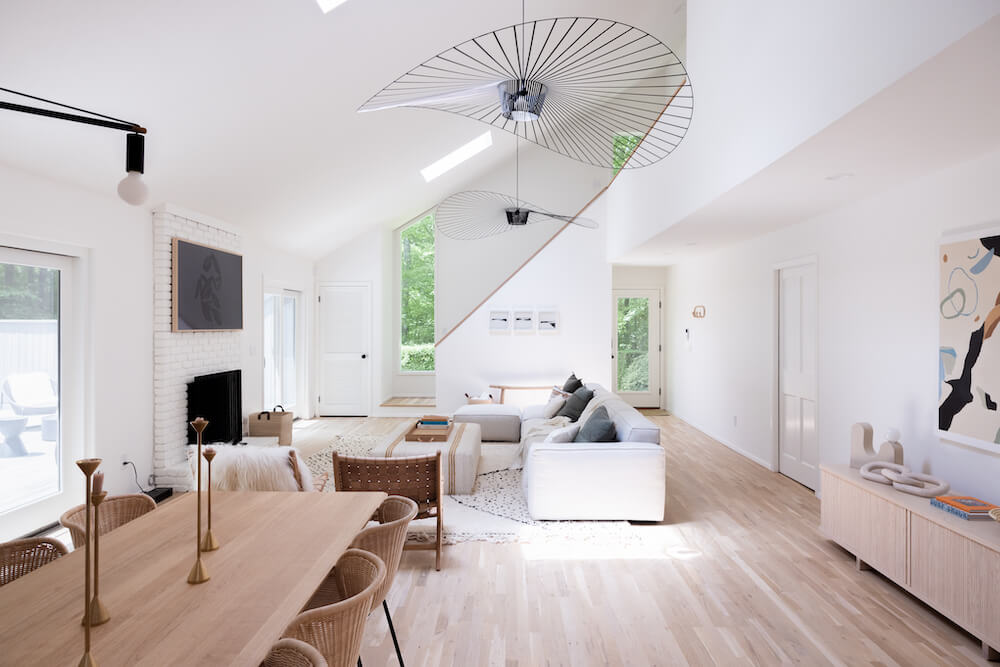Eco-Friendly Home Remodeling Tips and Tricks for Everyone
I once thought that green remodeling was a luxury, reserved for the eco-conscious elite. But then I discovered that small, sustainable changes can make a big impact. From energy-efficient appliances to eco-friendly materials, I saw how Sweeten transformed different homes into a haven of both style and sustainability.
Sweeten’s tips for green remodeling—from your home layout to lowering energy bills
Making the decision to renovate instead of constructing a new home is already the first step to green remodeling. Sustainable home building, which seeks to minimize construction waste while making homes more energy-efficient, is growing in popularity nationally. Sustainable home building and “green” renovations are also becoming easier, especially in eco-minded markets like L.A.
“You don’t have to do a lot to make a big difference,” explained John Shipman from Build It Green. The non-profit developed the GreenPoint Rated label to help and reward homeowners and builders for sustainable construction and sustainable home renovations.
At Sweeten, we’re experts at all things general contractors. Here’s how Sweeten works: We pre-screen them for our network, carefully select the best ones for your remodeling project, and work closely with hundreds of general contractors every day.
Why should you do a sustainable home renovation?
Creating a “greener,” more sustainable home can be a smart investment with long-term benefits. While initial costs may be slightly higher, the long-term savings and environmental impact are significant.
Here’s why you should consider a sustainable home renovation:
- Reduced Energy Costs: Energy-efficient upgrades like high-performance windows, insulation, and smart thermostats can significantly lower your utility bills. In fact, a well-insulated home can reduce heating and cooling costs by up to 30%.
- Increased Home Value: Sustainable homes are increasingly in demand. Green certifications and energy-efficient features can boost your home’s resale value. Studies have shown that green homes can sell faster and for a premium.
- Improved Indoor Air Quality: By using non-toxic materials and proper ventilation, you can create a healthier indoor environment. This can alleviate allergies, respiratory issues, and other health problems.
- Positive Environmental Impact: Sustainable renovations reduce your carbon footprint and contribute to a more sustainable future. By conserving energy and water, you’re helping to protect the planet.
- Enhanced Comfort and Well-being: Energy-efficient homes are often more comfortable, with consistent temperatures and reduced noise pollution. This can improve your overall quality of life.
The cost of a sustainable home renovation can vary widely depending on the specific upgrades and the size of your home. However, here’s a general breakdown of average costs for common sustainable home improvements: Sweeten brings homeowners an exceptional renovation experience by personally matching trusted general contractors to your project, while offering expert guidance and support—at no cost to you. Renovate expertly with Sweeten
- Energy-efficient windows: $100 to $300 per window
- Insulation: $1,000 to $3,000 per 1,000 square feet
- Smart thermostats: $100 to $300
- Solar panels: $10,000 to $30,000 (including installation)
- Water-efficient fixtures: $100 to $500 per fixture
A guide to green remodeling
Energy assessment
Calling in an energy auditor is a great place to start your green remodeling project. It will lead to an efficient home, as well as make your sustainable home renovation productive and strategic.
An energy assessment can involve a visual inspection as well as thermal imaging with infrared cameras to detect energy loss. A blower picks up on unwanted airflow through cracks surrounding entry points like windows as well as roofs. An assessment typically costs a few hundred dollars (see more about the process here). It might be a worthwhile investment.
Passive design
The layout of your home and everything under the hood—think airtight windows and insulation—have a huge impact on how effortlessly you will live a modern, sustainable life. It can also eliminate 30 percent of your household energy bills. Here are some top sustainable building options to consider:
- Home layout: A significant part of passive design is the physical orientation of your house, and how that interacts with the seasons. If you’re embarking on a significant renovation, you may have the opportunity to consider where each living space goes. For example, you could reconfigure your living room, where you spend most of your daytime hours so that it faces south. This will give you maximum sun and heat during the winter, reducing your home heating costs.
- Skylights are something else to consider to add natural light, said Timothy Corrigan, a Los Angeles-based interior designer who has completed several sustainability projects in the area. So that there isn’t just a black hole at night where the skylight is, he suggested putting LED lights in the shaft. Covering the opening with an opaque filter creates some soft lighting.
- The exterior color of your home will also make a difference, according to Timothy. If you’re in a warm climate, head towards light colors for a cooling effect. That’s one reason why a dark, even black home exterior is common in colder countries—it holds in heat.
- Landscaping: What trees you plant and where can make a big difference. Deciduous trees provide shade during the summer and maximize heat and light during the winter when they shed their leaves. The best place to plant for this effect is on the south and west side of a structure. Adding a green roof will also keep your home cool.
Renovation materials for green living
Are you planning to buy materials for a sustainable home renovation? Here are ways to go about sourcing new materials and reusing what you already own while mixing in your own creativity:
- The Kitchen Cabinet Manufacturers Association’s Environmental Stewardship Program guides consumers to the most sustainable cabinets. The program rates options on five categories including environmental stewardship and air quality. And it turns out that sustainability is one of the main reasons home renovators or builders choose a specific cabinet company. That’s a good hint for companies to produce greener cabinets.
- Product Guides: Build It Green’s website is a wealth of information on sustainable building materials, from plumbing to roofing to bathroom fixtures. Each section gives a detailed list of what to look for to ensure the materials are sustainable.
- Deconstruct: Instead of coming in with a big hammer and demolishing the interior of your home, take it slow and steady. Give yourself and your contractor a chance to see what can be repurposed or refurbished.
Sustainable renovation ideas: Resell and buy locally
If you don’t want to reuse anything, it’s likely someone else will. Nonprofits like Renovation Angel and Big Reuse make that exchange very easy. They will haul away your old materials and appliances (after they assess its value), and then resell them. You get a donation tax write-off for whatever they take (plus, you don’t have to pay to send it to landfill.)
- Reusing: Giving new life to what you already have is a simple way to reduce your renovation’s carbon footprint. For example, refinishing your existing cabinets with non-toxic paint could save you thousands on a kitchen renovation. Then there’s also refacing, where you keep the cabinet frame and switch out the doors as well as pulls, knobs, and hinges.
Reuse cuts down on a range of negatives like manufacturing and transportation emissions from producing something new. It will also reduce your remodel’s waste and help shrink your budget, too. That’s a win on many levels.
- Reclaim: Consider using local items previously used and not shipping barn wood across the country. It reduces the need to buy anything new, which means less raw material is stripped from the earth.
Sustainable renovation ideas: Air sealing your home
An incredible amount of energy is wasted when air either leaks out or gets in. Your heating system has to work much harder if there is a continuous draft from a crack between a door and the floor. Here are some simple, and not-so-simple, ways to air seal your house:
- Caulking: This material squeezes into small, stationary areas to prevent airflow coming through cracks and gaps and joints that are less than a quarter-inch.
- Weatherstripping: This is typically a foam or rubber material that can be cut to fit different dimensions. Unlike caulking, weatherstripping is for anything that moves, such as doors or windows.
- Airtight drywall: If you’re doing a significant renovation, this is the approach with the best outcome. Airtight drywall seals joints, seams, and openings in your walls, doors, and windows during construction.
Sustainable renovation ideas: Low-E windows
Low-Emissivity glass allows a minimum amount of ultraviolet and infrared rays through your windows. The coating keeps the inside temperature consistent by keeping it inside and preventing it from escaping. About 30 percent of heating and cooling energy is lost through windows and doors.
Glass absorbs heat in the summer and cold during the winter, which puts pressure on your heating and cooling systems. The Low-E coating does double duty by reflecting energy from the outside and the inside. For example, in the summer, it reflects heat back to the sun and the cold from air-conditioning back inside the house. If your renovation calls for new windows, it’s your chance to either use Low-E windows or add a Low-E coating to what you already have.
Sustainable renovation ideas: Insulation
Insulation will improve the efficiency of your home by trapping energy in. The outside weather has less impact on your inside temperature. However, some insulation products have certain advantages. Recycled cotton and cellulose insulation are made from 80 percent recycled materials, according to the Build It Green material guide. Companies such as CertainTeed, use recycled glass so products meet the EPA’s Recovered Material Guidelines. This saves material from clogging up landfills while improving your home’s energy efficiency. When choosing your insulation material, be on the lookout for products that are free of VOCs and toxins.
Green remodeling and sustainable renovation offer a path to a healthier home, a greener planet, and a healthier wallet. As an article from Apartment Guide reminds us, ‘adopting energy-saving habits can be particularly impactful, especially when small changes lead to noticeable savings.’ Happy (green) renovating!
Ready to renovate? Start the journey here for free!
Here you can learn more about our services and locations. Alternatively, browse more home renovation inspirations, processes, and cost guides.
